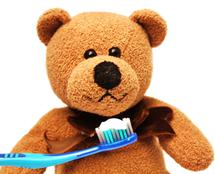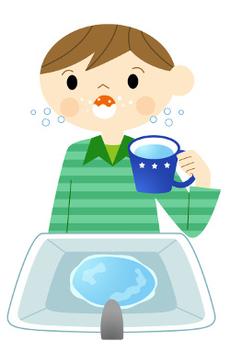Mouth care
Author: Maria Yiallouros, Gesche Tallen, MD, PhD, Editor: Maria Yiallouros, English Translation: Hannah McRae, Last modification: 2020/05/14 https://kinderkrebsinfo.de/doi/e73986
- Make sure your child does regular and thorough dental care (at least three times per day after meals). This reduces the amount of germs in the mouth and throat and keeps the gums moist.
- Use a soft toothbrush with a short brush head to avoid injury to the gums; replace the toothbrush at least every four weeks, and rinse the mouth thoroughly after each brushing (see below). If bleeding or damage to the inside of the mouth occurs, you may do without the toothbrush until healed. Also, a cotton-tipped substitute (a “q-tip,” for example) may be used.
- To rinse the mouth, tap water is fine as long as it does not come from a well or an old pipe. If it does, either mineral water or tea (peppermint, chamomile, sage, or marigold) are recommended for rinsing. Rinsing should take place in accordance with tooth brushing at least three times daily, and more often if the mucus membrane is injured, meaning at least six times per day.
- After each vomiting, the teeth must be brushed and the mouth rinsed, in order to prevent the teeth from sustaining damage.
- In case of mucositis, rinse the mouth regularly with antiseptic wash (for example, Chlorhexidine) to get rid of germs and prevent infections; gargling with chamomile or sage tea also has anti-inflammatory properties.


